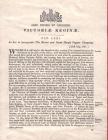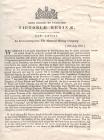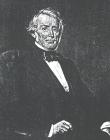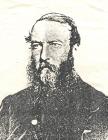1
There was a lot of confusion concerning the Bruce Mines copper rush and the government's dealing with license applications. Several applications were delayed or not processed and it was believed that Council was attempting to exclude certain individuals from obtaining a license.In 1846, James Cuthbertson, a Montreal merchant, applied for a mining license. At the same time, the government had placed a moratorium on the issuing of licenses until reports from the surveys that had already taken place had been received. James Cuthbertson eventually purchased the property to prevent anyone else from making a claim and the area became known as the Cuthbertson location.
2
The Act to Incorporate the Huron and Saint Mary's Copper Company.28 July 1847
Bruce Mines, Ontario, Canada

3
In 1846 John William Keating, an Indian Agent with Her Majesty's Indian Department, and Arthur Rankin, a land surveyor, explored the area and formed the Huron and St. Mary's Copper Company.This is a document excerpt from the Provincial Statutes of Canada. Journals of the Legislative Assembly of the Province of Canada from the 2nd day of June to the 28th day of July 1847. In the 10th and 11th years of the reign of Queen Victoria: being the third session of the second Provincial Parliament of Canada.
5
One year after James Cuthbertson purchased the area known as the Cuthbertson location, he sold it to the Montreal Mining Company.This is a document excerpt from the Provincial Statutes of Canada. Journals of the Legislative Assembly of the Province of Canada from the 2nd day of June to the 28th day of July 1847. In the 10th and 11th years of the reign of Queen Victoria: being the third session of the second Provincial Parliament of Canada.
6
"The Bruce deposits in the north shore area, as well as being the first known copper deposits in the region, also seem to have been the largest and most productive of this type."-Geological Survey of Canada, Memoir 383, Geology of the Huronian Belt Between Sault Ste. Marie and Blind River, Ontario,
by M.J. Frarey, Energy, Mines and Resources Canada, 1977.
7
In a news article appearing July 5, 1847, Canada West stated:"Ojibwa Indians today protested to the government against mining interests occupying land they consider to be theirs on the north shore of Lake Huron (at Bruce Mines). The Indians settled the land after the War of 1812, moving there from the south side of the lake because they wanted to stay under British rule. They say they settled the area 'with the understanding of the British authorities,' and consider the land theirs because they haven't received any remuneration for it."
Chronicles of Canada, Chronicle Publications, Montreal, Quebec, 1990, pg. 243.
9
William Edmond Logan was the first director of the Geological Survey of Canada in 1842, and made the first map of the Bruce Mines area in 1848.Photo courtesy of the Bruce Mines Museum.
11
Alexander Murray was an Assistant Geologist with the Geological Survey of Canada. In 1847 he examined the prospects of copper mining in the Bruce Mines area. His report supported the development of mining. The mineral veins were good, the area had access to a good harbour, and there was plenty of water to support both the mining and a town.Photo courtesy of the Bruce Mines Museum.
12
From 1848 to 1850 the mines were producing well. Powerful engine and ore dressing machinery were put in place and a large copper smelting and refining plant was erected. The majority of the machinery was purchased in England and brought over by ship."…The works that we saw were mostly open trenches, displaying a few feet of top-soil, consisting of unstratified drift, clay with scratched pebbles, and boulders."
-Louis Agassiz, 1848
"The clearing of the ground and burning the brush has been carried on to a considerable extent.
…This work it was necessary to perform before the summer commenced, in order to guard against fire, and also to prevent the great annoyance caused last year to the Miners by the flies, which several times obliged them to leave their work."
-Campbell, 1848
13
After the initial shipment of copper was sold in Boston, it is believed the remainder of the shipments crossed the Atlantic and were sold in England. In 1853 both the Montreal Mining Company and the Wellington Copper Mining Company had sold shipments of copper at auctions in England.14
The following factors contributed to the mines operating at a loss in 1853-1854:1. They had been working poorer stopes with less copper content.
2. Higher wages were being paid to the miners.
3. Manpower was being lost to build a canal for the locks in nearby Sault Ste. Marie, Michigan.
4. The company had recently lost a winter supply ship at sea in the fall of 1854.


